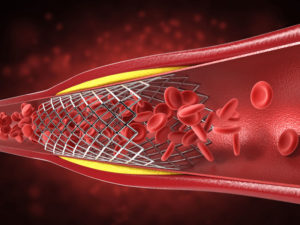How Is SMA Stenosis Detected and Treated Most Effectively?
The artery responsible for pumping blood to your large and small intestine is known as the Superior Mesenteric Artery (SMA). When this artery falls victim to atherosclerosis and becomes clogged with plaque, then a serious condition known as Superior Mesenteric Artery Stenosis (or SMA Stenosis) takes hold, leading to some debilitating consequences.
Tracking SMA Stenosis
As with many of the disorders caused by atherosclerosis, SMA Stenosis can seem almost dormant during its initial stages. However, as the problem grows more serious, patients are no longer asymptomatic. The symptoms of SMA Stenosis can include nausea and vomiting, as well as several types of bowel dysfunction, pain in the abdomen after eating and abnormal liver function.
Diagnosing the disease early is very essential to its effective treatment. When it is not diagnosed in time, and the artery is allowed to clog to a greater extent, more invasive treatment methods are required. Fortunately, the treatments available at MIVA Medical in Missouri will be performed by some of the best experts in the fields, requiring only minimally invasive methods and mild sedation. Diagnosis is achieved through ultrasound, MRI or CT, and an arteriogram is required to properly map the artery and blood vessels before any kind of intervention is approved.
Performing an Arteriogram with Intervention

An arteriogram involves mapping the Superior Mesenteric Artery using a special dye that is
injected into the bloodstream. The dye allows X-ray imaging to take clear picture of the placement of the artery and blood vessels, so that a special needle can be inserted for the purpose of allowing our experts to access the area.
Because the needle is hollow, it can easily be guided through the artery. This is done through ultrasound, and the needle will carry a wire that places a sheath in place so that the medical specialists will have temporary access to the SMA.
Once access is gained, stent placement is one of the main treatment methods that will be performed. This method involves placing a metal wire tube into the artery to keep it from closing and blocking off the blood being pumped to your intestines. An alternative to stent placement is balloon angioplasty, which achieves the same result through a long balloon that is inflated inside of the artery. Finally, atherectomy is a slightly more unique treatment approach which involves the removal of plaque buildup from within the artery.
Depending on how advanced the disease is, the experts at MIVA will determine which treatment method will be best. Each can be performed using moderate sedation and requires only a minimal amount of time for recovery. A closure device will also need to be attached to seal off the artery to further decrease recovery time.
